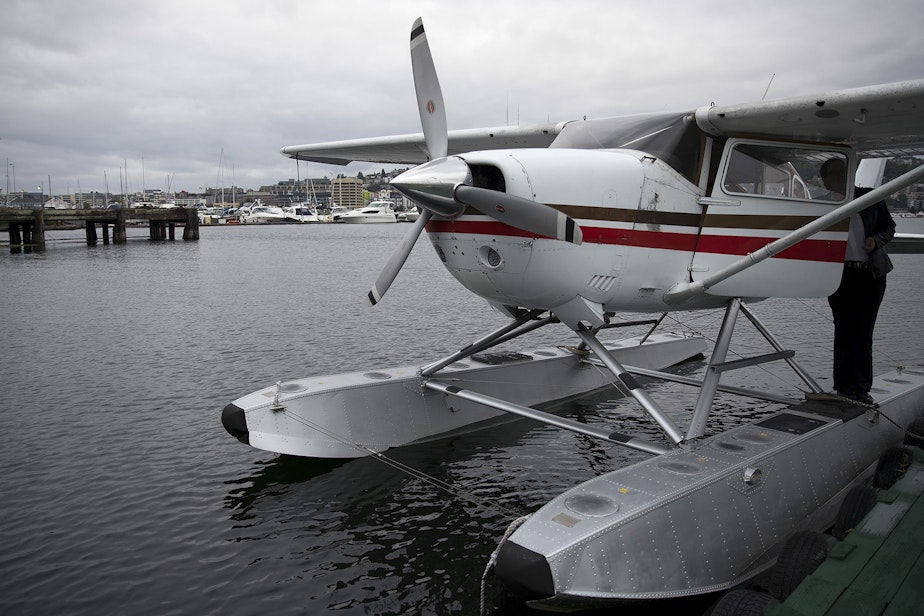Electric floatplanes could help sink two big pollution problems

A company in Redmond aims to fly what could be the world’s first electric floatplane this year.
After a November test flight, MagniX then plans to outfit Vancouver, B.C., company Harbour Air’s entire seaplane fleet, North America’s largest, with batteries and electric motors in three years.
The zero-emission planes, if approved by Canadian regulators, could help sink two big air-pollution problems.
Today, when a floatplane takes off, there’s a good chance it’s burning “avgas”—a petroleum fuel with lead added to it.
Lead was phased out of highway gasoline starting 45 years ago because of its severe health effects.
Yet floatplanes and other small planes with piston engines still put about 8 tons of lead a year into our air in Washington state, more than any other source of the brain-damaging pollutant.
Sponsored
Half the lead going into American air comes from small airplanes burning leaded fuel, according to the U.S. Environmental Protection Agency.
Switching to unleaded fuel, as activists and medical experts have long called for, could solve that public-health problem. But switching to electric motors could have much bigger benefits.
“There's simply no emissions whatsoever,” said Roei Ganzarski, a former Boeing executive who heads MagniX.
About a third of Vancouver-based Harbour Air’s 42 floatplanes currently burn leaded fuel, according to a spokesperson. The rest burn jet fuel, which, like almost all petroleum fuel, is unleaded but emits heat-trapping carbon dioxide.
Unleaded fuel burned in cars and trucks is the United States’ biggest source of climate-wrecking carbon emissions.
Sponsored
While battery technology has been advancing quickly, replacing fuel tanks with batteries would limit how far a plane can fly.
Ganzarski said his company’s electric floatplane could handle 30-minute flights while maintaining a 30-minute battery reserve for safety.
“To fly 100 miles or a 30-minute flight is definitely a reality with today's batteries,” Ganzarski said. “If you look at Harbour Air's network, their flights are 15, 20, 25 minutes long, which is perfect for an all-electric aircraft today.”
Some floatplane operators in Seattle said they like the idea, but today’s batteries can’t meet their needs.
“They have a lot of flight legs that are less than 30 minutes, where most of ours are fairly long-haul,” said Shane Carlson with Northwest Seaplanes. The Renton-based airline flies five avgas-burning and one jet-fuel-burning plane from the southern end of Lake Washington.
Sponsored
“We’re still a ways [away] in the battery-tech end of it before we can have the ability to go electric,” Carlson said.
“Right now, we have no plans to go to electric,” said Brandon Meadows with Seattle Seaplanes, which has a fleet of four avgas-burning floatplanes.
A flight from Seattle’s Lake Union to Friday Harbor on San Juan Island takes about an hour.
Kenmore Air is Washington’s biggest floatplane operator, with 18 planes, seven of which have the piston engines that burn avgas.
“They use leaded fuel--that’s what’s available,” Kenmore operations director John Gowey said. “Until that changes, there’s not much we can do.”
Sponsored
Gowey said Kenmore was in discussions with “a Northwest-based company” to incorporate electric technology into the Kenmore fleet. “I can’t be any more specific than that right now,” he said.
Bothell-based startup Zunum Aero has been developing a hybrid-electric plane that the Boeing-backed company says will have a range of 700 miles, about the distance from Seattle to San Francisco.
The hybrid planes could be converted to all-electric if battery technology keeps improving as expected.
While several startups are attempting to develop all-new electric airplanes, MagniX is taking a different approach by retrofitting Harbour Air’s existing planes, some of which date back to the 1960s.
“The aircraft themselves are basically flying tanks,” Ganzarski said. “They're phenomenally strong, phenomenally well-built, very stable.”
Sponsored
“They’ve got the right idea there,” Gowey said. “That’s the way to go, to retrofit the existing fleet.”
Getting a plane or any heavy object into the air is energy intensive. But the electricity that would get Harbour Air’s planes aloft would have less impact than the fuels that do so today.
Hydropower and other climate-friendly, renewable energy sources provide 94 percent of electricity in British Columbia, according to Canada’s National Energy Board.
Correction, 4/11/19: An earlier version incorrectly described Roei Ganzarski's former role at Boeing.




